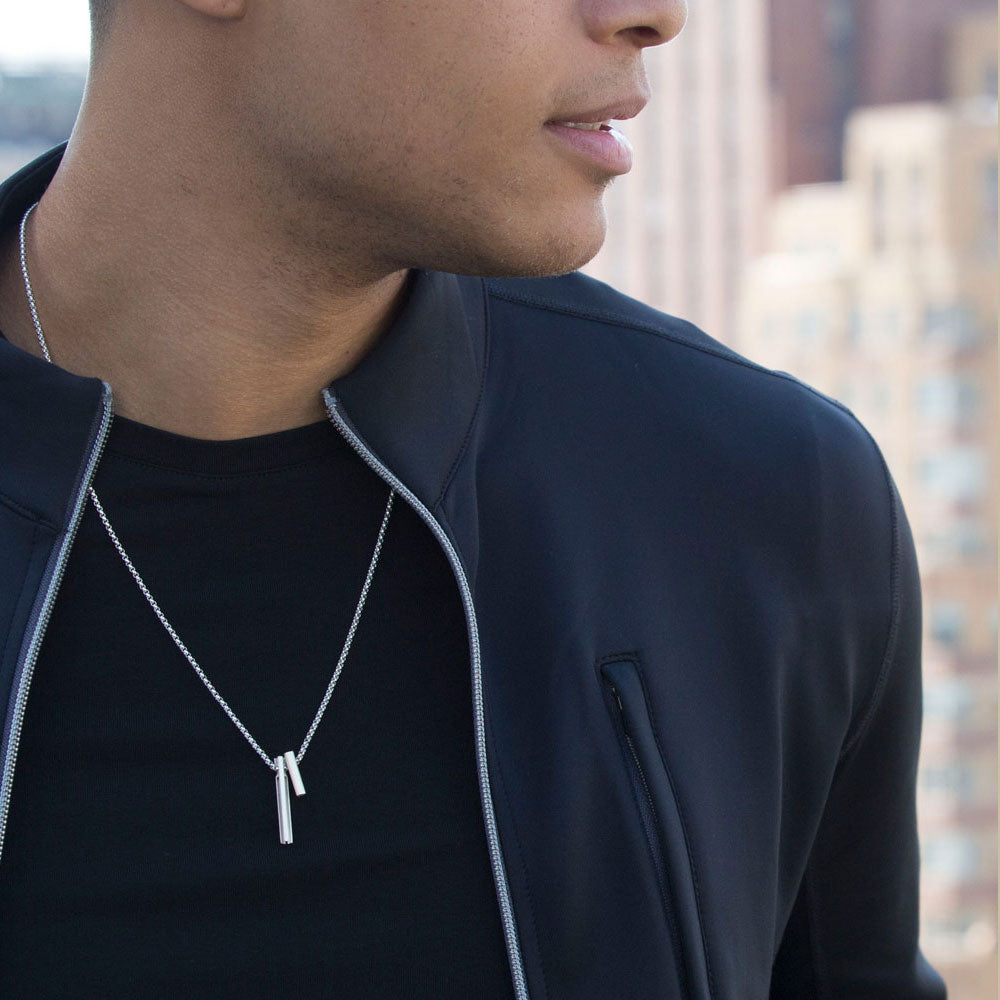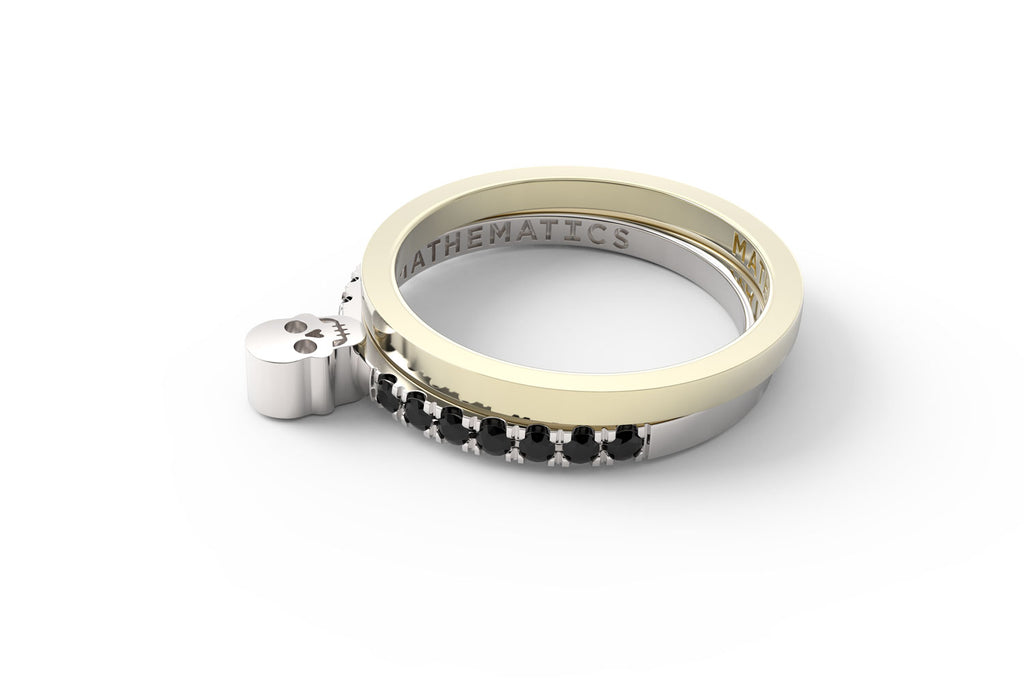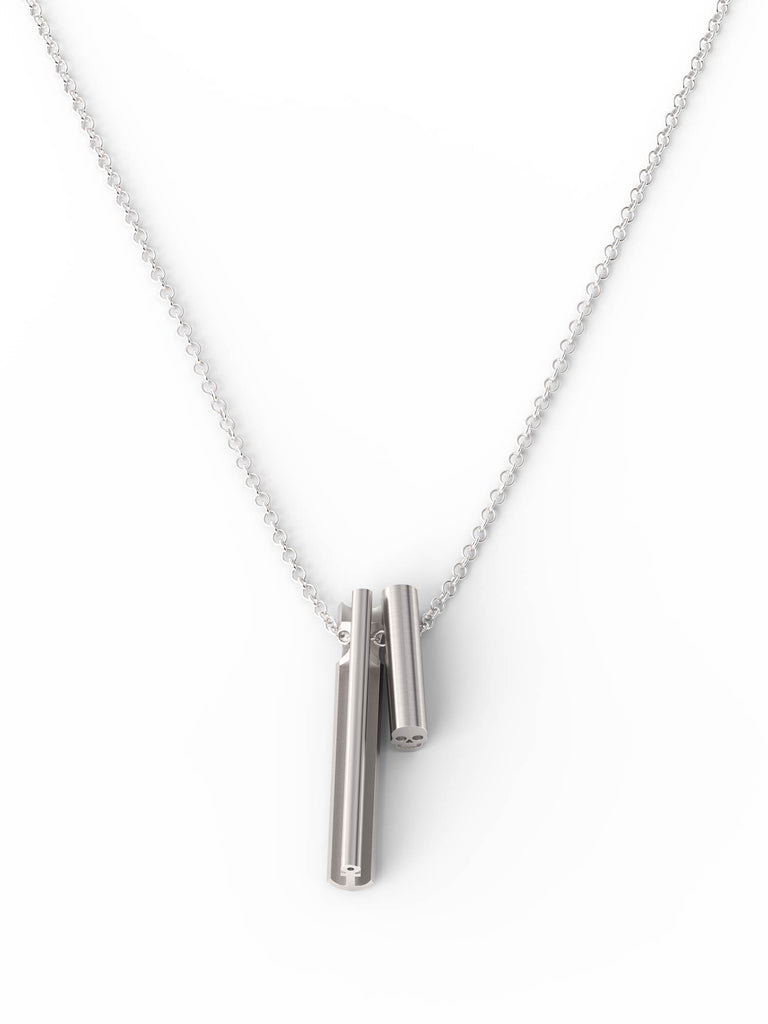Symbol Revealed: The Mythology Behind the Skull
Halloween season is here, and while you might not usually describe your jewelry collection as “scary,” the SKULL Pendant is a meaningful symbol to add to your Hidden Message Necklace. It’s a subtle nod to the spooky, ghost-ridden holiday, but also an age-old symbol of power and royalty.
The tough and sometimes menacing symbol actually has positive connotations that extend beyond its modern rock-and-roll image. The skull symbol in jewelry has been around for more than 1000 years, worn by everyone from kings and queens of old to kids and ladies who lunch. Here’s what you need to know about the skull symbol—including how to incorporate the SKULL Pendant into a custom necklace, designed by you and created by us.

The Skull Symbolized Power
The skull made its first real appearance as a fashion statement in the 15th century. Originally considered a symbol of power by philosophers like Plato and Tibetan monks, the skull became popular as an icon people wore as a “memento mori”—a reminder of their own mortality. (Directly translated, it means “remember, you must die.”) Eerie as that may sound, back then, death didn’t have the negative connotations it has today in western cultures. Instead, it represented the natural circle of life, including passage into the afterlife—under the protection of a range of mighty and all-powerful gods (depending on what you believed).

It Was Favored by Royalty
Queen Victoria started a trend of memorial jewelry in Elizabethan Europe, and the skull symbol featured prominently. Skull-adorned jewelry was worn to commemorate a loved one. Queen Victoria wore hers to honor her late husband, attaching locks of his hair to her jewel. At the time, it was a powerful way to hold loved ones near and dear.

It Was Embraced by High Fashion
In the 1960s, the symbol of the skull was embraced by the public—and was worn by rockers, A-listers, and more. More recently, Alexander McQueen made it a centerpiece of his fashion collections—and before you knew it, even children were sporting skull motifs on their clothes. Today we think of the skull icon as a little dangerous, a little tough, and stylishly edgy.

It Adds Stylish Edge to Your Custom Necklace
There are quite a few ways to include the SKULL symbol in your signature design as you create your own necklace. You could build a Pendant Necklace with the skull as the centerpiece between two letters—your initials—on a thin and delicate chain. You could also opt to wear it as a single charm, but up the ante with a chain made from white, rose, or yellow gold. It’s a very giftable design, ideal for both men and women. Or you could pair your pendant necklace with a SKULL Slice Ring (or two!) for a slyly edgy stackable ring set.
What does the skull symbolize to you? Would you add it to your collection now that you know the meaning behind it?
